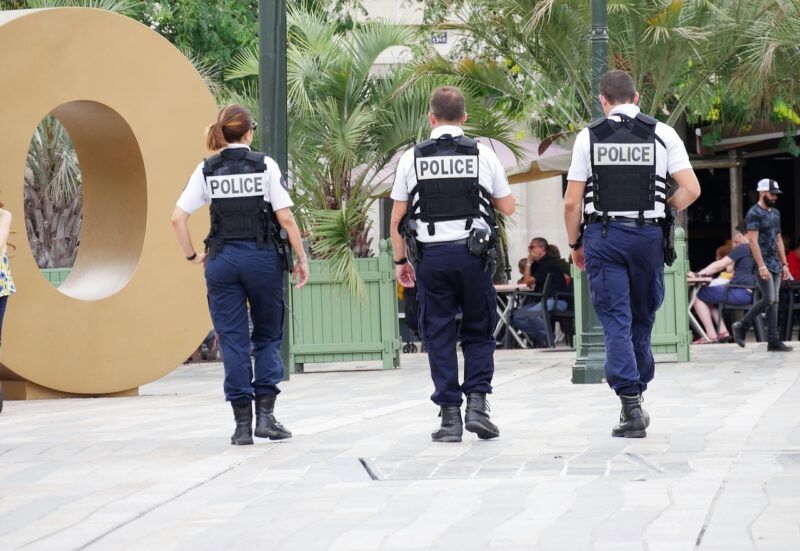Comparing Police Forces: How Different Countries Approach Crime Prevention
November 14, 2024

In an increasingly interconnected world, crime prevention strategies vary widely from one country to another. Each nation’s unique historical, social, and political context shapes its approach to law enforcement and public safety. Understanding these differences can provide invaluable insights into the effectiveness and efficiency of crime prevention strategies globally.
1. The Role of Police Forces Around the World
Police forces are primarily tasked with maintaining law and order, protecting citizens, and preventing crime. However, the methods and philosophies guiding these functions can differ greatly. From community-oriented policing in the United States to the militarized approaches in some Latin American countries, various styles exist. The nature of the crime landscape in a country typically dictates the role and methods employed by its police force.
2. Community Policing: The American Model
In the United States, community policing has emerged as a popular approach to crime prevention. This model emphasizes building strong relationships between police officers and community members. The goal is to foster trust and collaboration, which can lead to more effective crime prevention. Key features of community policing include:
- Neighborhood Partnerships: Police work closely with residents to identify local concerns and develop strategies to address them.
- Problem Solving: Officers are empowered to address the root causes of crime and social disorder, rather than simply responding to incidents after they occur.
- Public Engagement: Community events and outreach programs foster interaction between officers and citizens, creating a sense of shared responsibility for public safety.
While this model has shown promise in improving community relations, challenges remain. Issues such as systemic racism, police brutality, and strained public trust continue to complicate the relationship between communities and law enforcement.
3. Militarization of Police: A Global Phenomenon
In contrast to the community-oriented approach evident in the U.S., many countries have adopted a more militarized model of policing. This is particularly prevalent in regions where crime rates are high, and social unrest is rampant.
Countries like Mexico and Brazil have faced considerable challenges with drug trafficking and organized crime. In response, they have increased the militarization of their police forces. Examples include:
- Special Forces Units: The establishment of elite police units designed to confront violent crime directly and engage in combat-style operations against gangs.
- Military Equipment: The use of military-grade equipment and tactics in routine policing, including armored vehicles and heavy weaponry.
- Emergency Declarations: Governments often declare states of emergency to legitimize military involvement in policing, blurring the lines between civilian law enforcement and military operations.
While this militarization can lead to immediate responses to severe crimes, it has faced criticism for escalating violence and eroding civilian oversight. Public perception of police has been negatively impacted, with concerns about civil liberties and human rights violations.
4. Nordic Model: A Focus on Rehabilitation and Trust
Scandinavian countries like Norway, Sweden, and Finland showcase an entirely different approach to policing and crime prevention. The Nordic model emphasizes rehabilitation over punishment and focuses on building trust between citizens and law enforcement. Key aspects include:
- Strong Social Support Systems: Comprehensive social services that address underlying issues like poverty and inequality, reducing the root causes of crime.
- De-escalation Training: Police officers receive extensive training in conflict resolution and de-escalation techniques, which help to prevent situations from escalating into violence.
- Focus on Human Rights: A respect for human rights and dignity plays a central role in police interactions, reflected in policies and training.
This model has resulted in lower crime rates and a more favorable public perception of the police. However, it requires sustained political will and investment in social programs, making it difficult to replicate in less wealthy or stable countries.
5. Technology and Innovation in Policing
Technology is transforming policing approaches in various nations, offering both opportunities and challenges. Countries like Singapore and the United Kingdom have integrated technology into their crime prevention strategies with notable outcomes:
- Predictive Policing: Algorithms analyze crime data, allowing law enforcement to deploy resources more effectively and forecast potential criminal activities.
- Community Reporting Apps: Initiatives allow citizens to report crimes or suspicious activities directly to the police, increasing community engagement and response times.
- Surveillance Technology: The deployment of CCTV and facial recognition technology has become common, raising significant concerns over privacy and civil rights.
While technological advancements hold great promise, they also introduce ethical dilemmas that require careful consideration and regulation. The balance between ensuring public safety and protecting civil liberties remains a pressing issue.
6. A Comparative Overview
To better understand how different countries approach crime prevention, we’ve created a comparative overview of the primary policing models:
| Country | Policing Model | Focus |
|---|---|---|
| United States | Community Policing | Building trust and community relations |
| Mexico | Militarized Policing | Combatting drug-related violence |
| Norway | Rehabilitative Focus | Community trust and low recidivism |
| Singapore | Tech-Enabled Policing | Efficiency and strategic resource allocation |
This table illustrates the differing priorities and strategies employed by nations according to their specific crime prevention needs.
7. Conclusion: The Path Forward
As we continue to navigate the complexities of a globalized society, it’s crucial to learn from the successes and challenges faced by various policing models worldwide. By understanding how different countries approach crime prevention, policymakers and law enforcement agencies can adopt best practices that reflect their unique cultural and societal contexts.
The future of policing must strive for a balance between community engagement, innovative technology, and civil liberties to create safer and more just societies for all. As each country tailors its approach to fit its unique challenges, sharing knowledge and practices across borders may pave the way for improved crime prevention worldwide.







